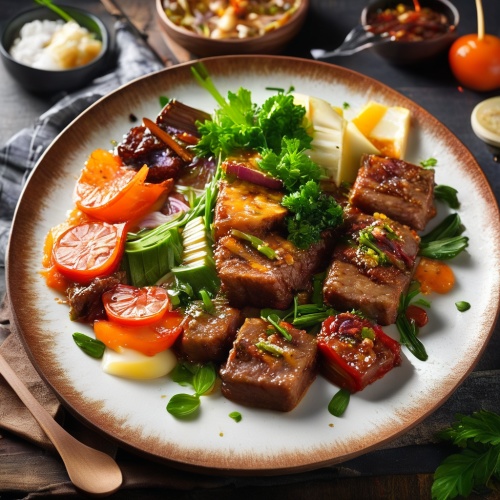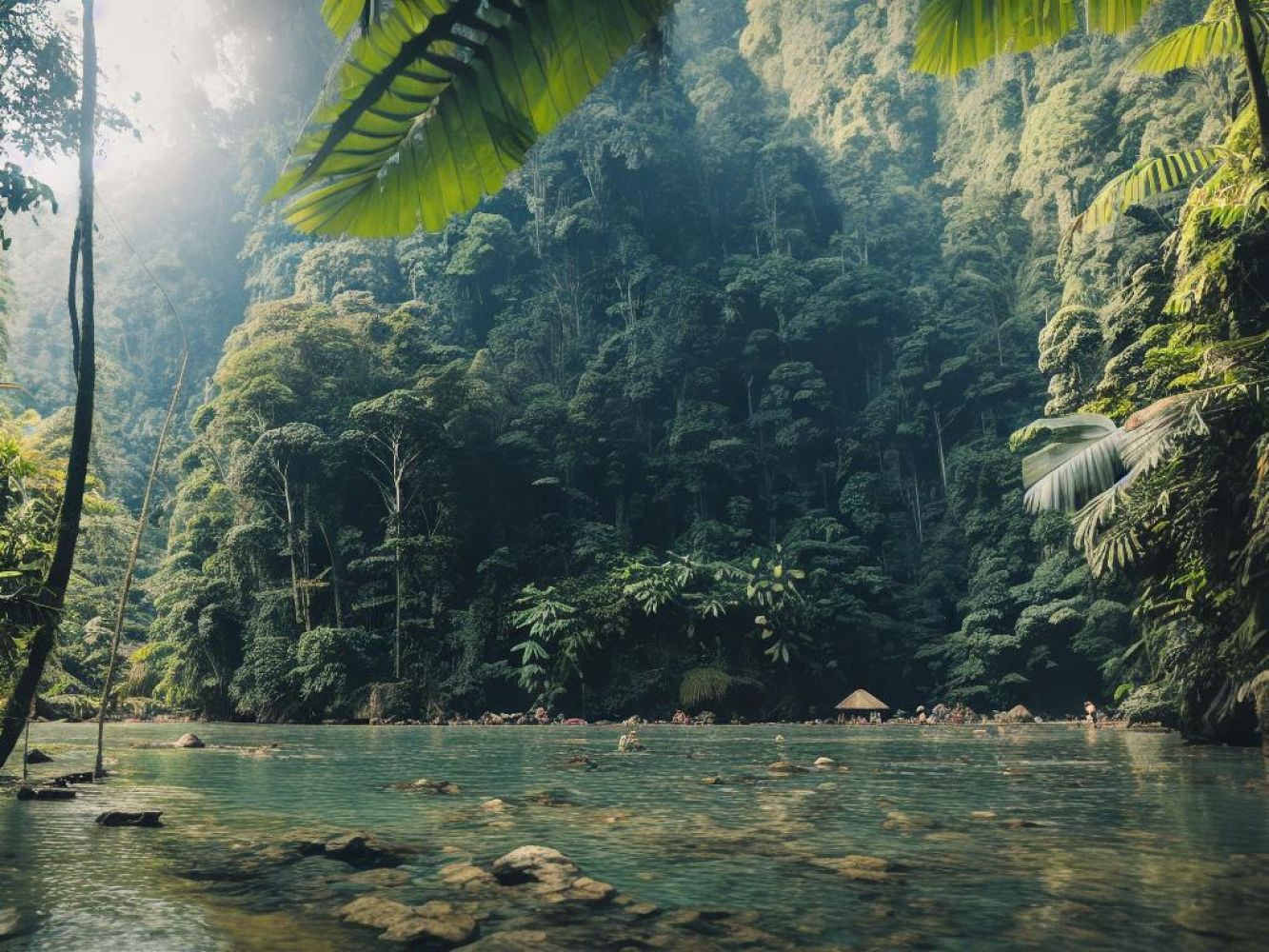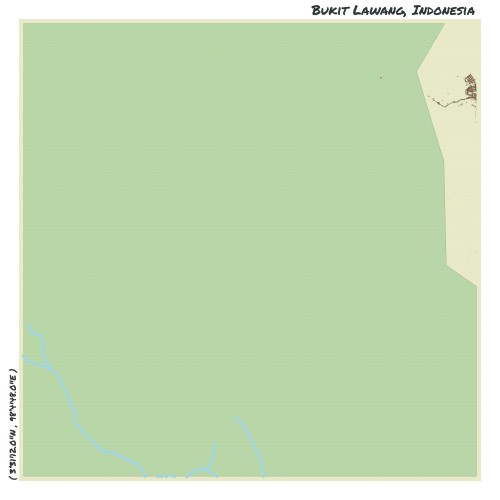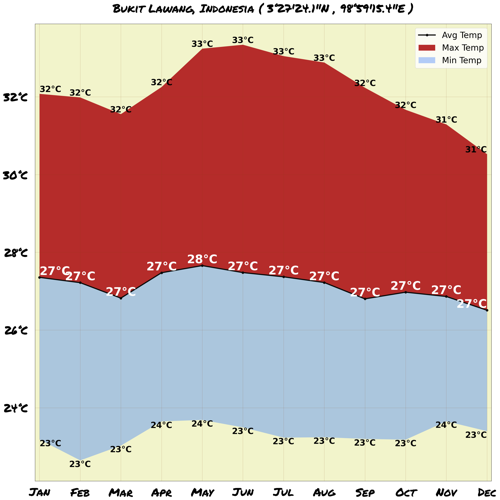Understand
Bukit Lawang, a charming village situated in North Sumatra, Indonesia, is a true wildlife haven. Nestled just 90 kilometers northwest of the bustling city of Medan, Bukit Lawang offers a unique opportunity to encounter semi-wild orangutans in their natural habitat, all while enjoying the convenience of tourism facilities. In 1973, a groundbreaking orangutan rehabilitation center was established in Bukit Lawang by a dedicated Swiss organization. The mission of this center was to rehabilitate orangutans that had been held captive, preparing them for their return to the wild. Skilled rangers at the center impart essential survival skills to these extraordinary creatures before their release. As you step foot into the lush jungle, you become part of an incredible conservation effort. The orangutans released back into the (semi-)wild population continue to be monitored by the dedicated rangers and receive supplementary food at the feeding platforms until they become fully self-reliant. This pioneering project paved the way for the Sumatra Orangutan Conservation Programme (SOCP), a testament to the dedication of those involved. Bukit Lawang has blossomed into a popular destination over the years, attracting more and more tourists from around the world. However, the village faced a devastating setback when a flash flood struck in 2003, causing extensive damage. Illegal logging was the unfortunate cause of this disaster, wiping out local tourist resorts and severely impacting the tourism industry. In the face of adversity, the resilient community of Bukit Lawang rallied together to rebuild their village. With a renewed focus on sustainability and preserving the fragile ecosystem they call home, the young generation is working tirelessly to create a brighter future for Bukit Lawang. By visiting this remarkable destination, you not only contribute to their noble cause but also unlock a world of wonder and embark on an unforgettable journey through the untamed beauty of North Sumatra.
Map & Climate
Popular Foods
 Nasi Goreng is a popular Indonesian dish, which literally translates to 'fried rice'. It is typically made with a blend of white and fried rice, accompanied by a variety of ingredients including eggs, chicken, shrimp, or beef, along with vegetables such as carrots, peas, and green onions. Seasoned with soy sauce, salt, and sometimes chili, Nasi Goreng offers a savory taste and can be found throughout Indonesia as a staple meal.
Nasi Goreng is a popular Indonesian dish, which literally translates to 'fried rice'. It is typically made with a blend of white and fried rice, accompanied by a variety of ingredients including eggs, chicken, shrimp, or beef, along with vegetables such as carrots, peas, and green onions. Seasoned with soy sauce, salt, and sometimes chili, Nasi Goreng offers a savory taste and can be found throughout Indonesia as a staple meal. Sate is a diverse category of dishes found across Southeast Asia, but it holds a special place in Indonesian cuisine. Made of seasoned, skewered, and grilled meats, Sate can feature various types of protein, including chicken, beef, goat, or even offal. These skewers are traditionally served with a spicy peanut sauce and often accompanied by rice or other side dishes. Sate is a favorite street food in Indonesia and caters to both those who prefer meat or vegetarian options.
Sate is a diverse category of dishes found across Southeast Asia, but it holds a special place in Indonesian cuisine. Made of seasoned, skewered, and grilled meats, Sate can feature various types of protein, including chicken, beef, goat, or even offal. These skewers are traditionally served with a spicy peanut sauce and often accompanied by rice or other side dishes. Sate is a favorite street food in Indonesia and caters to both those who prefer meat or vegetarian options. Rendang is a traditional Indonesian beef curry that is slow-cooked to achieve a tender and succulent texture. The meat is cooked in coconut milk, causing it to absorb the spices and become infused with their flavors. Rendang typically features a combination of spices like lemongrass, galangal, turmeric, and chilies, alongside other regional variations. This hearty, flavorful dish is often served over rice and enjoyed during festive occasions or as a comforting meal.
Rendang is a traditional Indonesian beef curry that is slow-cooked to achieve a tender and succulent texture. The meat is cooked in coconut milk, causing it to absorb the spices and become infused with their flavors. Rendang typically features a combination of spices like lemongrass, galangal, turmeric, and chilies, alongside other regional variations. This hearty, flavorful dish is often served over rice and enjoyed during festive occasions or as a comforting meal.




Comments
NO COMMENTS